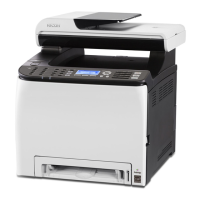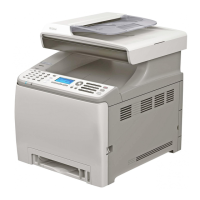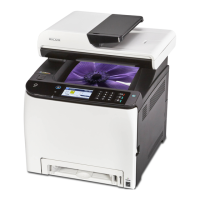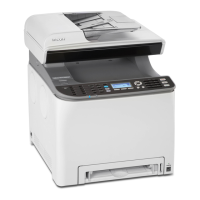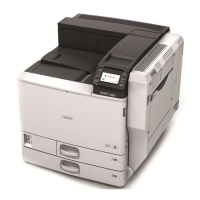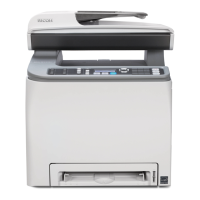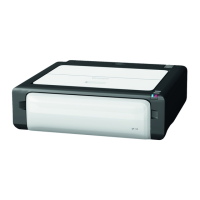• The paper capacity described in the tables above is an example. Actual paper capacity might be
lower, depending on the paper type.
• When loading paper, make sure the stack height does not exceed the limit mark of the paper tray.
• If multiple sheet feeding occurs, fan sheets thoroughly or load sheets one by one from the bypass
tray.
• Flatten out curled sheets before loading them.
• Depending on the paper sizes and types, the copy/print speed may be slower than usual.
• When loading envelopes, see page 112 "Loading Envelopes".
• When loading thick paper of 129-220 g/m
2
(34 lb. Bond–80 lb. Cover), see page 128 "Thick
paper".
• When copying or printing onto letterhead paper, the paper placing orientation is different
depending on which function you are using. For details, see page 109 "Loading Orientation-fixed
Paper or Two-sided Paper". If you load paper of the same size and same type in two or more trays,
the machine automatically shifts to the other tray when the first tray in use runs out of paper. This
function is called Auto Tray Switching. This saves interrupting a copy run to replenish paper when
making a large number of copies. You can specify the paper type of the paper trays under [Paper
Type: Tray 1]–[Paper Type: Tray 2]. For details, see "Tray Paper Settings", Connecting the
Machine/System Settings. For the setting procedure of the Auto Tray Switching function, see
"General Features", Copy.
• When loading label paper:
• We recommend that you use specified label paper.
• Select the appropriate paper thickness for [Paper Type].
Thick paper
This section gives you various details about and recommendations concerning thick paper.
• When loading thick paper of 129-220 g/m
2
(34 lb. Bond–80 lb. Cover) in the paper trays
or bypass tray, follow the recommendations below to prevent misfeeds and loss of image
quality.
• Store all your paper in the same environment - a room where the temperature is 20–25°C (68–
77°F) and the humidity is 30–65%.
• Jams and misfeeds can occur when printing on thick smooth paper. To prevent such problems, be
sure to fan smooth paper thoroughly before loading them. If paper continues to become jammed or
feed in together even after they are fanned, load them one by one from the bypass tray.
• When loading thick paper, set the paper direction according to its grain, as shown in the following
diagram:
8. Adding Paper and Toner
128

